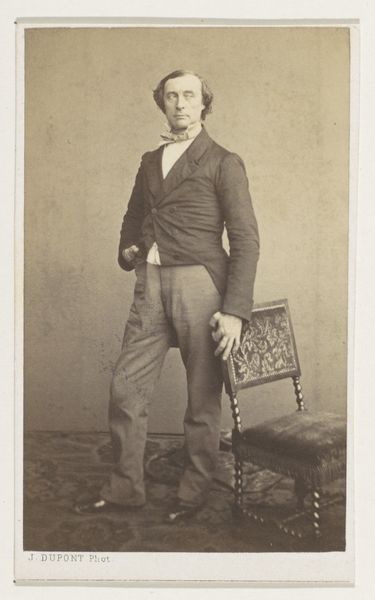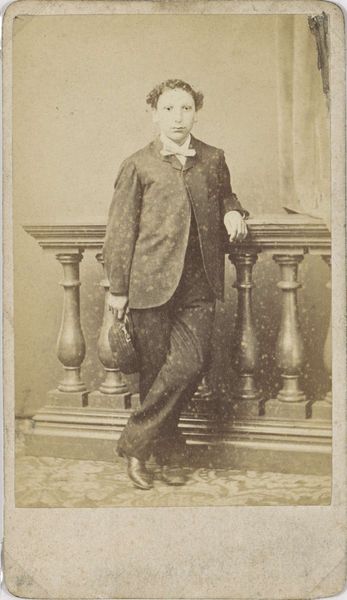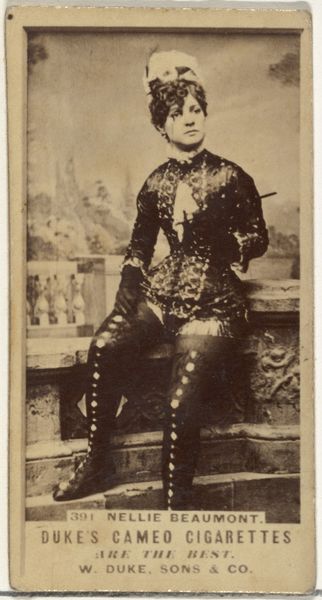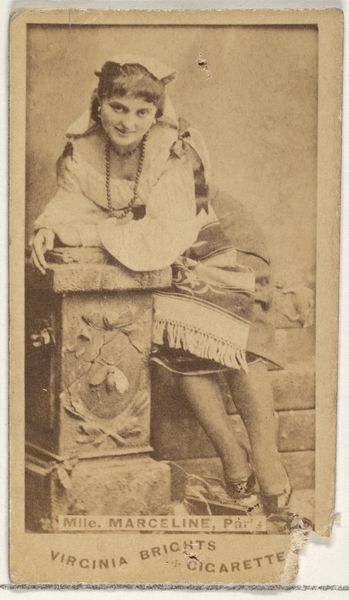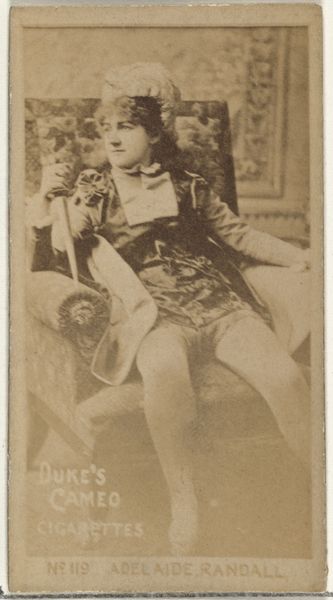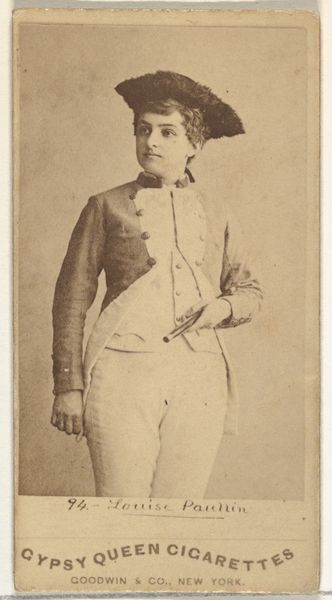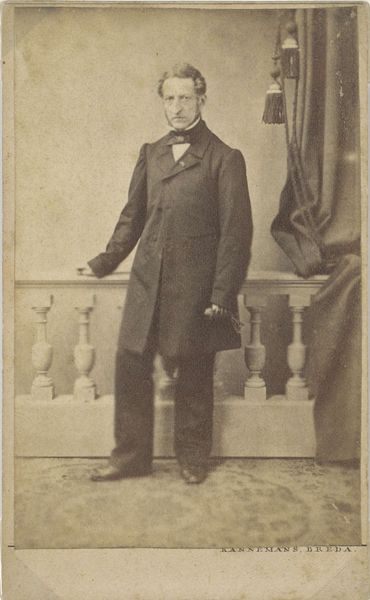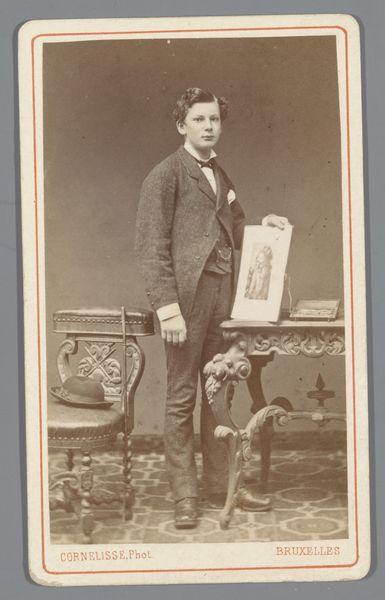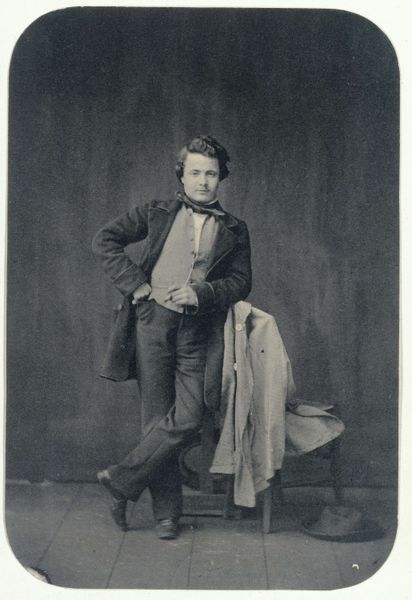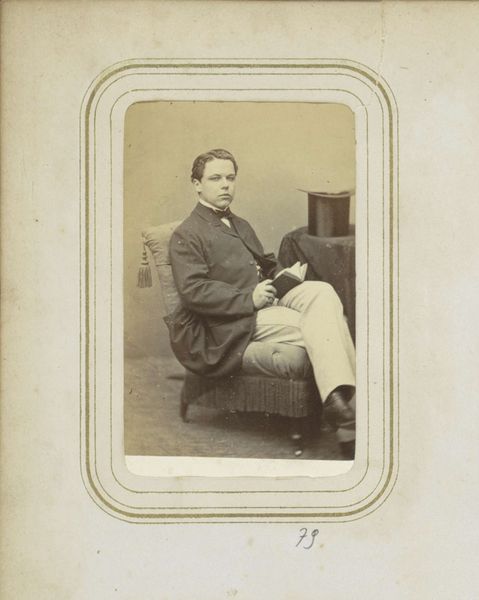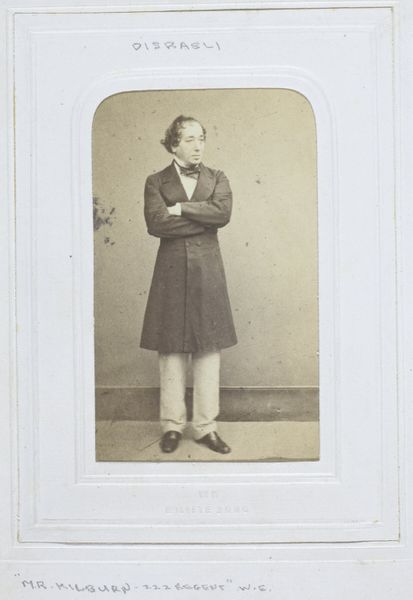
Portret van Louis Royer met het schetsontwerp voor het grafmonument van prins Alexander van Oranje-Nassau (1818-1848) 1861 - 1890
0:00
0:00
photography, gelatin-silver-print
#
portrait
#
16_19th-century
#
archive photography
#
photography
#
historical photography
#
gelatin-silver-print
#
academic-art
#
realism
Dimensions: height 104 mm, width 59 mm
Copyright: Rijks Museum: Open Domain
Maurits Verveer captured this photographic portrait of Louis Royer, alongside his sketch for the tomb of Prince Alexander, sometime in the mid-19th century. Photography in this era was more than just a visual record; it was a chemical process, carefully managed to produce an image on a treated surface. Each print required expertise and material inputs, reflecting the rise of industrial chemistry. Royer, the subject, was himself a master of material transformation, turning stone into commemorative sculpture. His sketch gives us a glimpse into his creative process. We see his intentions, which would later be realized through the physical labor of carving, polishing, and assembling the tomb. Consider the contrast: the relatively quick, replicable process of photography versus the slow, demanding craft of sculpture. Yet, both rely on skilled labor, both contribute to a culture increasingly focused on image and commemoration. They speak to a society grappling with new ways of representing itself and its history. It's a potent reminder that every image, every object, embodies layers of human effort and ingenuity.
Comments
No comments
Be the first to comment and join the conversation on the ultimate creative platform.
